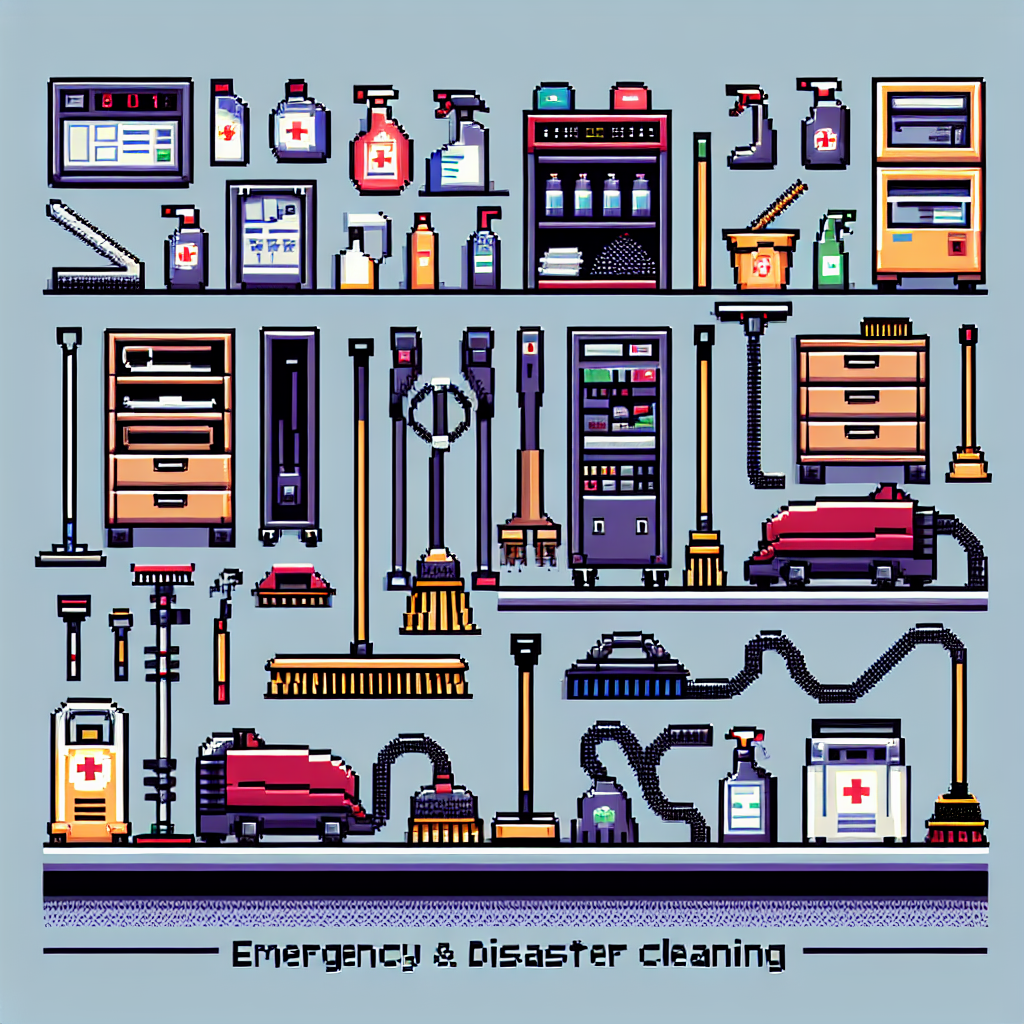Discover the critical role of emergency cleaning protocols in disaster recovery, particularly in healthcare settings. Learn how these protocols ensure the safety of individuals and expedite restoration efforts post-disaster. By establishing well-defined procedures, organizations can enhance preparedness, mitigate risks, and maintain compliance with industry regulations. Explore the key elements that make emergency cleaning protocols effective in safeguarding occupants and preventing further damage. Equip yourself with the knowledge to act swiftly and decisively in emergencies, protecting the health and well-being of all involved. When disaster strikes, having robust protocols in place can make all the difference in the timely and successful recovery of affected environments.
Emergency cleaning protocols are not just a recommendation; they are a crucial component of disaster recovery in various environments, especially healthcare facilities. When disasters strike, whether natural or man-made, the ability to respond swiftly and effectively can make a significant difference in the recovery process. In the realm of emergency and disaster cleaning, having well-established protocols is vital for ensuring the safety of occupants, preventing further damage, and restoring normalcy as soon as possible.
Importance of Emergency Cleaning Protocols
Establishing and implementing emergency cleaning protocols is essential for healthcare facilities, where the health and well-being of patients, staff, and visitors are top priorities. These protocols outline systematic procedures that must be followed in the event of a disaster to minimize risks, contain hazards, and expedite the restoration process. Here are some key reasons why emergency cleaning protocols are vital for disaster recovery:
Preparedness: Having well-defined emergency cleaning protocols in place ensures that all stakeholders are prepared to act swiftly and decisively when a disaster occurs.
Risk Mitigation: Proper protocols help mitigate risks associated with exposure to hazardous materials, infectious agents, or structural damage.
Compliance: Adhering to established protocols ensures compliance with regulatory requirements and industry standards, which is crucial for maintaining accreditation and reputation.
Key Elements of Effective Emergency Cleaning Protocols
Effective emergency cleaning protocols encompass a range of critical elements that are designed to facilitate a coordinated and efficient response to disasters. These elements include:
-
Clear Communication Channels: Establishing clear lines of communication among response teams, stakeholders, and external agencies is essential for effective coordination.
-
Defined Roles and Responsibilities: Assigning specific roles and responsibilities to team members ensures that tasks are delegated effectively and executed promptly.
-
Training and Drills: Regular training sessions and emergency drills help familiarize personnel with protocols, equipment, and procedures, enhancing preparedness and response efficiency.
-
Equipment and Supplies: Ensuring the availability and functionality of essential cleaning equipment, PPE, and disinfectants is crucial for effective response and containment.
"Effective emergency cleaning protocols are like a well-rehearsed symphony, where every member of the team knows their part and plays it to perfection, creating harmony in the face of chaos."
Continuous Improvement: Regular review and refinement of emergency cleaning protocols based on lessons learned from past incidents and industry best practices are essential for staying ahead of potential challenges.
Best Practices for Implementing Emergency Cleaning Protocols
Implementing emergency cleaning protocols effectively requires a strategic approach that integrates best practices tailored to the specific needs and risks of healthcare facilities. Consider the following tips to enhance the implementation of emergency cleaning protocols:
Customization: Tailor emergency cleaning protocols to address the unique risks, layout, and operational requirements of each healthcare facility.
Collaboration: Foster collaboration among different departments, external partners, and regulatory agencies to ensure a comprehensive and coordinated response to emergencies.
Documentation: Maintain detailed documentation of emergency cleaning protocols, training records, equipment inventories, and incident reports to support accountability and continuous improvement.
Regular Review: Schedule routine reviews and updates of emergency cleaning protocols to incorporate feedback, address gaps, and align with evolving industry standards.
The Role of Professionals in Emergency Cleaning Protocols
Cleaning professionals play a pivotal role in the successful implementation of emergency cleaning protocols within healthcare facilities. Their expertise, attention to detail, and commitment to infection control are instrumental in safeguarding the health and safety of occupants during and after a disaster. By following established protocols diligently and leveraging their knowledge of cleaning techniques and disinfection practices, professionals can contribute significantly to the recovery and resilience of healthcare environments.
In conclusion, emergency cleaning protocols are the cornerstone of effective disaster recovery in healthcare facilities. By prioritizing preparedness, communication, training, and continuous improvement, professionals can enhance their ability to respond to emergencies swiftly and decisively. Remember, a proactive approach to emergency cleaning protocols today can make a world of difference in the outcomes of tomorrow's unforeseen challenges.



